SS104 Study Guide Week 1-2
1/98
Earn XP
Description and Tags
Modules 1-4
Name | Mastery | Learn | Test | Matching | Spaced |
|---|
No study sessions yet.
99 Terms
Georgian Period
1714-1837
Victorian Period
1837-1901 (notable for the reign of Queen Victoria)
Agricultural Revolution
from 1750-1830
Manorialism and Feudalism (1300s, 1400s, 1500s) → some land being farmed by smaller landowners and others farmed by serfs/peasants, common lands
Farming in strips → very inefficient
Enclosure Acts
1604-1914
takes away common lands and gives more power to large landowners more efficient to farm enclosed fields than random strips of land
Rectangular plots of land
Begins to harm smaller landowners, some people left behind and now forced to migrate
Production increases (doubles in fact)
New World Crops: potatoes, squash, tomatoes, corn (maize)
Crop rotation and animal husbandry (sheep for shearing, lamb for rocky soils, etc. choosing animals to breed together)
Charles “turnip” Townshend → 4 field system, no fields ever fallow, clover and turnips give nutrients to the soil

Enlightenment
1651
Factors in by recognizing how people want to make their lives better
Financial growth: market expansion, making more profit, Bank of England founded in 1694 → investment culture quite strong
The Scientific Revolution may have shifted this change in farming earlier
Pros and Cons of Increased Agricultural Output
Pros: Increased nourishment, longer life span, decreased mortality, more jobs, increased population and childbirth + infant life span (more children to work on the farm), more affordable food, urbanization, rich people increase power and prestige
Cons: Waste from surplus of food (no refrigeration), more exploitation for work, less fair wages, people forced to migrate to newer jobs after Enclosure Act, changes work patterns, Luddites (smashing machines), overcrowding and less sanitary conditions, changed family dynamic due to primogeniture so other children left to fend for themselves
Life in New England During Agricultural Revolution
An agricultural society (90%)
From subsistence to specialization
American South and slavery (large-scale agricultural), gentlemen farmers, plantations
Growth westward and scale of farming
Not innovating to the degree of England
Demographic Revolution
Consumer Revolution happening alongside
Urbanization → instead of growing upwards, growing and expanding outwards (new fill)
Exponential, rapid growth
Gin St. —> Destruction, chaos, emaciated
Shows the negative effects of cheap gin on London’s poor.
Depicts poverty, crime, addiction, neglect, and social decay caused by excessive gin drinking.
It was a warning about the dangers of gin abuse, which was rampant in the mid-1700s.vs.
Beer Lane —> full bellies, structured, etc.Shows a healthy, prosperous, and happy community where people drink beer, which was seen as a safer, more moderate alcoholic beverage.
Symbolizes social order, hard work, and well-being.
Why did the population grow and then urbanize?
subsistence level before 1700 bc harvests/disease
medical knowledge better (but not great)
people stopped delaying marriage/children as urban areas opened up new spaces to live and work (but overcrowding follows)
more women got married after industrial revolution and earlier, so longer time for reproduction
—> men no longer were getting apprenticeships that delayed marriage
improved nutrition ex. potato
technology —> improved transport allows for foodstuffs to be moved so a local area of famine could get food from other areas not affected
economics
Summary:
- enclosure --> privatized and enclosed land of landowners, eliminated traditional common lands, geared agriculture towards market rather than local family and village production.
- landless laborers moved to factories, mills, and mines
- transportation --> canal and road system, facilitated goods, people, and raw materials
- iron for machinery, after 1850s became steel for railroads, cities, factories, etc.
- coal/coke for firing steam engines and blast furnaces
1st Industrial Revolution
1750-1850 ish
Begins in Manchester —> Agricultural Revolution, some old pastoral qualities with strips vs. rectangular enclosed plots
Churches: Puritan ideal that wasting time is sinful, shared by methodists and other evangelical groups
Peak of industrialization near 1815
women start to work in factories
key industries: textile and cotton factories, iron w/ buildings and railways, mining with coal
key technologies: canals, trains/railways
Britain develops banking and credit system, boosting a market economy
1850: More factories, cows, canals, waterways, power of river to work machines
2nd Industrial Revolution (1860-1910 ish)
By 1870, lots more buildings,grey and polluted air from coal, people living above shop, privies due to no running water, gas lights on the street
Development of electricity, new types of engines, and new chemicals and industrial materials
Oil and steel especially important
steam and steamships
Internal combustion engines, commercial drilling, etc.
Widespread construction of railroad networks, ocean going steamships, automobiles, airplanes
1870-1914 → electricity, wireless telegraph, chemical industry, etc.
Consumer capitalism, more consumer goods
Department stores and mail-order catalogs
Victorian Era Periods
Queen Victoria 1837-1901
1837-1851 Early Victorian
1851-1877 Mid-Victorian
1877-1901 Late Victorian
Class System Shifts
rise of the middle class/property owning bourgeosie and proletariat/working class
The richest members of the bourgeoisie did not replace the aristocracy but merged with it through marriage
Transactional relationships
Aristocracy → class whose authority and power were rooted in land ownership and ancestry with martial past, class of leisure
Industrial bourgeoisie → commercial or professional achievement
Distinct, male dominated gender code (separate spheres)
Women confined to home while men were allowed in business, politics, and property ownership
Karl Marx
leading development of these two classes … one’s class position determined by one's relationship to the means of production. Members of bourgeois own and control means of production, while proletariat do not.
Born in 1818
Father was enthusiastic liberal and raised his son on Enlightenment works
Converted to protestantism to avoid legal inequalities imposed on jews
Many of his publications were suppressed
Materialistic interpretation of society - all history is about the control of the modes of production and class struggle → economic determinism (life is determined by my connection to modes of production and economic status of myself, my family, my country)
For marx, the invisible hand only helps the few (It’s a term coined by economist Adam Smith in the 18th century.
It describes how individuals, by pursuing their own self-interest (like making money), unintentionally help the economy and society as a whole.
Basically, when people try to improve their own situation, it can lead to good outcomes for everyone, as if guided by an invisible hand.)
Predicted that capitalism would experience a secular trend toward falling profits, ever increasing scale of industry and resultant decrease in number of firms
Worldwide economic depressions and crises
Lots of wealth created by capitalism but inevitably entire system would come crashing down
Factory Conditions
Factories often hot, crowded, loud, dangerous
Working hours were long, few breaks, child labor
Division of labor → workers did specific, repetitive tasks
Workers won right to strike in 1870s
In industries and regions where union organization was strong, wages and working conditions did improve over time
Factory Acts starting in 1802,, 1847 Ten Hours Act where working day was max 10 hours for women and children 13-18
Health and Morals of Apprentices Act (1802)
First-ever factory law in Britain.
Focused on apprentice workers (mostly children in cotton mills).
Required:
Factories to provide basic education for apprentices.
Limits on working hours for apprentices: max 12 hours/day.
Some improvements in ventilation and cleanliness of factories.
Weak enforcement — no inspectors to ensure compliance.
Factory Act of 1833
No children under 9 could work in textile factories.
Children aged 9–13: max 48 hours/week (8 hours/day).
Children aged 14–18: max 69 hours/week.
Required 2 hours of education/day for children.
Appointed inspectors to enforce the law (first time ever).
Factory Act of 1844
Applied to women and children.
Limited women's working hours to 12/day.
Improved machine safety rules (guarding machines).
Children required to attend school half-day.
Factory Act of 1847 (Ten Hours Act)
Limited the workday to 10 hours for women and children in textile factories.
Factory Act of 1850
Set fixed working hours: 6 a.m. to 6 p.m. in summer; 7 a.m. to 7 p.m. in winter.
Factory Act of 1878
Brought all factories under one law.
Banned child labor under age 10.
Compulsory education for children up to age 10.
Maximum working hours: 56.5 per week for women.
Combination Acts (1799-1800)
→ made workers unions illegal, defended the property and privilege of the capitalist class , repealed in 1825
Cholera Epidemic
1830s and 1840s, contaminated water
→ public health movement
Second half of the 19th century → government initiatives supplied more accessible drinking water, sanitation, and sewage systems in industrial cities .. still was crowded and dirty
Extractive Industries
environmental damage from coal mining and oil drilling —> industrial pollution
Great migration
1840-1914
- great migration from Europe to Americas, Asiatic Russia, Australia, New Zealand
Why was England the Birthplace of the industrial revolution and arguably, modern society?
political liberty entrenched
powerful economy, manufacturing and Britain’s place at the heart of international banking
scientific curiousity long held
lack of monarchial influnece over financial and trade policy —> commitment to free trade
protestantism (weber)
parliamentary belief that govt should support progress —> use royal navy to protect trade routes, fund the creation of roads and canals
maturity and experience —> prestige and culture of innovation, growht, opportunity, innovation, and jobs characterized much of the Victorian era
Consequences of Industrial revolution
Rights and reform
Child labor
Working conditions
Unionization and protest
Romanticism and transcendentalism
Utopianism
Immigration and urbanization
Capitalism
Empire
Invention
modernity ??
Women working in coal mine pits
generational difficulty, working class women in pits, working 12 hour shifts even if pregnant, cramped and dark shafts
L.T Hobhouse
Liberalism is “saturated with the conviction that the unfettered action of the individual is the mainspring of all progress.”
The more the individual receives free scope for the play of his faculties, the more rapidly will society as a whole advance → classical liberalism (freedom to do what they want w/individual rights, mainly middle class men who want power)
Classical Liberalism Principles
—> they are proud of themselves because they’re the ones investing into machines, providing indoor work for laborers
Freedoms - press, etc.
Primacy of the individual
Skepticism of power
Rule of law, written constitutions
Rights – property, locke
Free trade (laissez-faire) limited tariffs → adam smith
Limited, elected parliamentary govt -> consent of the governed
Foreign policy based on freedom of action (free movement of capital, labor, people, good and services, and ideas)
Who? Landowners, new business people and professional classes (Marx would call them bourgeoiusie)
Strongest supporters of classical liberalism were businessmen, bourgeoisie, professionals who had no political role in the absolutist monarchies and wanted rights to think, worship, and conduct business free from restrictions of censorship, religion, and mercantilist economic regulation

Protestant Theology
emphasized the responsibility of the individual for his own salvation
combined with the breakdown of manorial agriculture and guild system that led each man to become an independent economic actor
The Bible is the sole and final authority in matters of faith and practice.
Rejects traditions not rooted directly in Scripture.
Sola Fide (Faith Alone)
Salvation comes through faith in Jesus Christ alone, not by good works or church rituals.
Sola Gratia (Grace Alone)
Salvation is a free gift of God’s grace, not earned by human effort.
Priesthood of All Believers
Every Christian has direct access to God without needing a priest as a mediator.
Encourages personal Bible reading and interpretation.
Justification by Faith
People are made right with God through faith, not through indulgences or sacraments.
Scientific Revolution
man could use his faculties to understand the world aruond him and thereby gain more control over it
Enlightenment
optimistic view of human nature, liberal view made this possible
John Locke (1632-1704)
Consent of the governed, checks and balances → disapproved democracy, felt that people with a fair amount of property should take part in govt
Property as the most important right that govt must protect, alongside freedom of worship, publication, and speech
contributed to classical liberalism thought

Representative Government
system in which citizens elect legislators to represent them in making decisions
Representative govt was developed further by Montesquieu and Tocqueville
Montesquieu: separation of powers

Tocqueville: concerned that representative govt was no guarantee of freedom for the individual, even w carefully separated powers
Felt that it’s inappropriate for uneducated men w no property to be involved in govt
Tyranny of the majority → force of public opinion in a polity where ultimate authority resides in the people
Democracy
rule by the people, every citizen entitled to have a voice in the decision
Jeremy Bentham (1748-1832)
Utilitarianism → only policies that work well and are conducive to human progress and happiness are useful, and therefore worth pursuing
Classical Liberal but next version → “greatest good for the greatest number of people”
While it’s about morality and social issues, it was used to underpin Classical Liberal economics
Individual good tied into overall “good” (doesn’t include women, only focuses on white men)
Adam Smith
set individual free to achieve what he can in life, unencumbered by unnecessary govt supervision or regulation
Classical liberal
Wealth of nations, economic activity is motivated by individual self interest and regulated not by govt but by competition
It was a protest against the arbitrariness, economic ignorance, and general ineffectiveness of mercantilist economic policies
Didn’t deny that govts should care about the economic well being of their ppl, merely asserted mercantilist policies did more harm than good
Corn Laws → aimed to protect british farmers by placing a tariff on imported grain, keeping price of bread artificially high, also meaning high wages
Repeal of Corn Laws by Parliament in 1846 → victory for liberal economic thought
Laissez Faire
created by adam smith
leaving people alone to pursue their own self interest. The best govt is least govt, govt should intervene in the activities of individuals only when there is compelling public reason to do so
Economic exchange best left to voluntary, rational exchanges between individuals
Govt should not determine what to produce, how to save, or what to build or trade
Govt planning and organization decreased prosperity and increases poverty
Supply and demand + smith’s invisible hand of free trade (naturallly guides what will happen economically)
Leaving individuals to pursue their own self-interest or liberty to make money fo themselves and their country
Anti mercantilism of the past (heavy taxation)
Specialiazatoin through division of labor → smith vs. specializatoin by country → ricardo
Healthy competition .. why now? Incipeint industrialization
Classical Liberalism in the 19th Century
liberals opposed legislation intended to reform appalling working conditions of the early factories.
Fought against legalization of labor unions, prohibition of child labor, attempts to shorten work day, efforts to make factory work less dangerous → all in the name of laissez faire
John Stuart Mill
Argued that toleration of unpopular, obnoxious opinion is essential to a free society and its absence indicates a society that does not value freedom sufficiently
Socialism
based on ideas of the Enlightenment
equality of men and potential to solve human problems by the application of reason
Valued cooperation over individualism, did not deny the value of the individual → each must be given an opportunity to develop to the best of his potential
Approve of representative govt and guarantees of civil rights
Govt involvement in economy is necessary to make sure no members of society are poor, uneducated, abused, and ignored by govt
Communism
follows Karl Marx
production , distribution, exchange of goods of all members of society is collectively owned
Seized ownership of assets and managed them through central bureaucracy
Meant to be fairer society for everyone
Friedrich Engels (1820-1895)
Wrote book showing disturbing life in city’s teeming slums and smoky factories
Revolutionary socialist
Son of a factory owner in Germany and England (middle-class)
Manchester – the shock city of the Industrial Age
Engels gets to Manchester and realizes the reality of the situation
Thomas Malthus (1766-1834)
Essays on the Principle of Population (1798)
Food production will not keep pace
Reproduction should be limited for the poor and WC
Attempts by the state to help the downtrodden were counterproductive because doesn’t allow for “the market” → invisible hand either helps or harms you, but if you work harder perhaps would not harm
Liberals therefore would oppose poor relief in the classic sense
In Malthusian theory, the "point of crisis" refers to the moment when a population's growth outpaces its ability to produce enough food, leading to a catastrophe
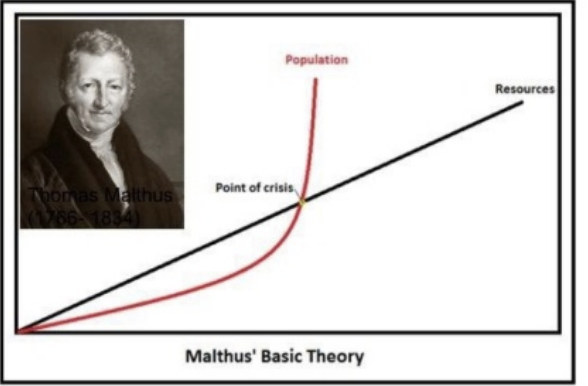
Utopianism
Robert Owen (1771-1858)
Utilitarian
New lanark, scotland
Borrowed from Christian ideas of community, need to build support
Working class + entrepreneuer New Harmony, Indiana
Sir Titus Salt
Saltaire 1851
Saltaire is famous for being a UNESCO World Heritage Site, recognized for its historical significance as a well-preserved 19th-century industrial model village and its influence on town planning. It's particularly known for its unique Italianate architecture, the impressive Salts Mill, and its connection to the textile industry. Additionally, Saltaire houses a significant collection of David Hockney's artwork within Salts Mill.
Romanticism and Gothic Revival
Passion without political upheaval
Love for the past as seen in arts and humanities
Enlgihtenment was a reaction agains the Middle Ages and hearkened back to Antiquity
Romantics hearkened to time of tradition and simplicity, reacting against upheaval and urbanization/industrialization
Classical Conservatism
Mainland Europe
Particularly reactions to France by Germanic Peoples
Oppositional to classical liberalism and nationalism
Napoleon’s empire
Return to the past, concert of vienna (people come together to end napoleonic war’s which lasted for 17 yrs)
After napoleon’s defeat at Waterloo in 1815, the major powers met in Vienna to design new balance of power system that would limit the risk of general wars in the future
Bring back stability through monarchy, tradition, faith, hierarchy, aristocracy, no rep govt.
Crown (monarch), Altar (go to church), landed Gentry in charge
lack of trust in the working class
belief in God

Edmund Burke
role of tradition as a guiding force on societal development
Von Metternich (1773-1859)
prince
disallows minority national groups from upsetting the balance of the bigger powers
prevent any form of representational govt that could bring about bloodshed in Europe
press censorship
architect of congress of vienna and balance of power theory
Industrialization
Time
Speed
Loss of pastoral way of life
Population
Poverty
Power
Romanticism + Industrialization = Socialism
Socialism arose as a reaction to social inequalities brought about by capitalism in Europe (Women in Pits, Sadler, poverty, sanitary conditions, and other inequalities)
Socialists want to impove the conditions of these people compared to classical liberals who dgaf
Early 19th Century Socialism
Based on Enlightenment ideals of equality and reason
Rejects “greedy” individualism of Classical Liberalism and Laissez faire economic system that does not allow for govt intervention to imrpove conditions
Values individual in terms of personal development (Enlightenment ideas about each person being valued, not just one kind of person)
Would like each individual to have the opportunity to develop their potential meaning safety, education, clothing
Almost like civic humanism
Felt that their society of newfound wealth and progress could make it a possibility for everyone o live up to their potential
Bringing everyone up together
Share ownership of natural resources and methods of distribution → God given natural resources from the Earth
Agrees with classical liberals on free press and votes for all
Agrees with mill version of utilitarianism →voters need to be literate, live safely ex. Equal education
Agrees with private property should be respected and individual needs
Feel wealth should be shared because created by nature ex. Cotton, coal, etc.
Methods: have been very diff in diff times in diff places
Principles of Socialism
primarily an economic model
values community, cooperation, equality, class politics, common ownership
Early Socialism = Utopianism
France —> Saint Simon (1760-1825)
Anticipated the donation of lands by the wealthy and MC to the public
Ideas an outgrowht of Christianity, 1825
Industrailization should be Chrsitianized and can be force for good
Scientists and intellectuals shouljd be in charge of natural resources with the State to build up the community, not focused on wealth
Charles Fourier (1772-1837)
Phalanx/Phalange
Failed attempts —> people don’t have enough money to invest in the town, no one in charge, no one to lead, doesn’t exactly work
Farming - thinker + worker
Robert Owen (1771-1858)
Revolutionary Socialists
Led by workers rather than the middle class factory owners of Utopian Socialism( middle down, revolutioanry socialist is bottom up) (workers must overthrow the entire system)
Revolution
Blandqui, Engels, Marx
Auguste Blanqui (1805-1881), French
Workers should look for a just society through revolution
Spent 33 years in jail due to his dedication to small secret societies
In favour of dictators first, after overthrow there should be a dictator in charge and everyone can follow that person.. Absolutist but not monarch x
Workers should be educated so they can vote according to their own interests (saw this fail to happen again in 1848)
Romanticism + Industrialization + Marxist Revolutionary Socialism = Communism
Marx and Engels reject the Utopian socialist idea that the bourgeoisie will generously give up the means to production and it should be taken by Revolution
Seize factories and run on own
Marx and Engels didn’t think rich people would just give up their factories. They said workers have to take the factories by force in a revolution and run them themselves.
what is the result of communism for marx?
Class distinctions disappear
All production exists with the nation
State will disappear after some time
complete equality
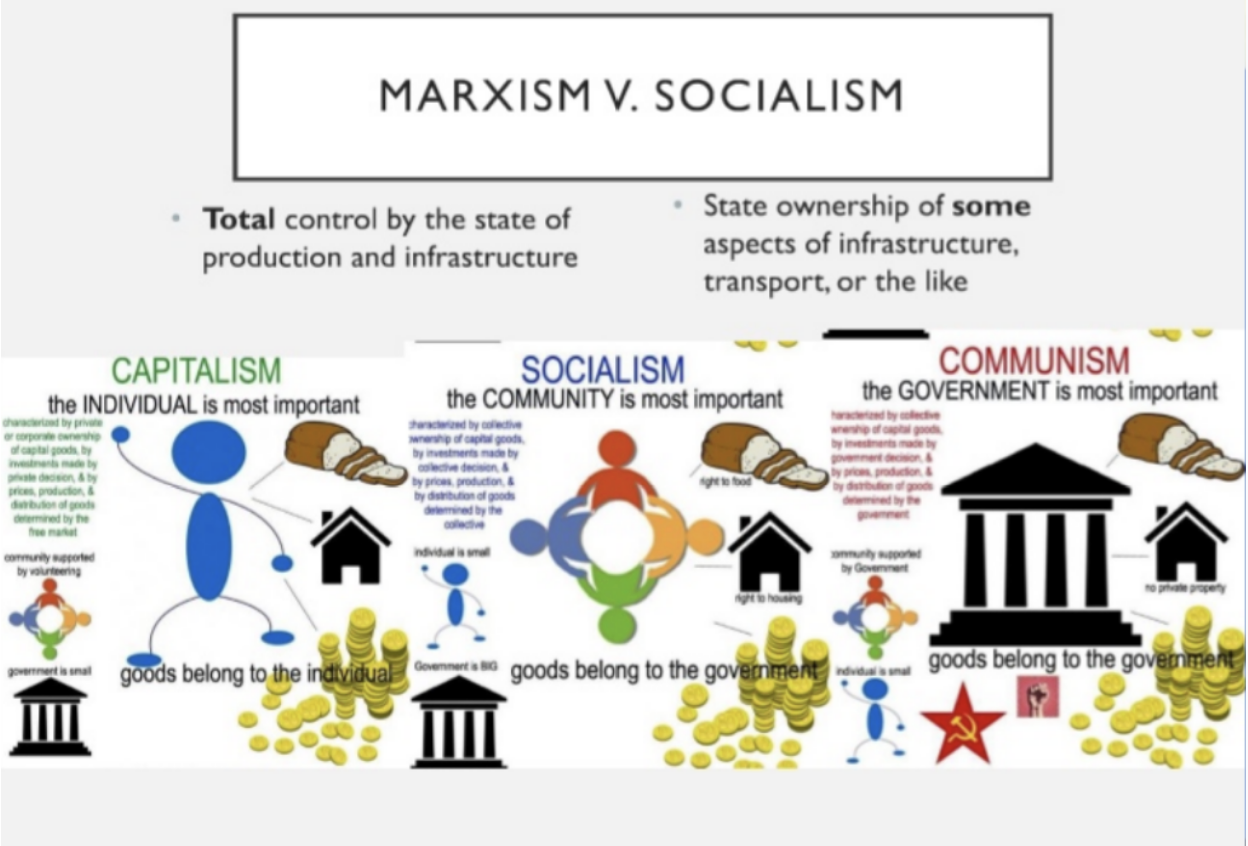
1848
year of revolutions
German Confederation, Austro-Hungarian Empire, Italy → govt doesnt understand the people, people are divided, young people want voices
England → no revolution since they already had it in 1688
France → lots of revolution
About nationalism and liberalism, not the worker, except for France
No marxian overthrow in Western Europe bc Europe is land of milk and honey w unions, demand for labor, unions give power where overthrow not needed, gentle reforms
Concert of Vienna
after Napoleon’s defeat at Waterloo in 1815, major powers met in Vienna to design a new balance of power system that would limit the risk of general wars in the future
bring about stability and end of an era of what was perceived as upheaval by going back and embracing the old:
monarchy
tradition
faith
hierarchy
aristocracy
no rep govt
Communist Manifesto, 1848
Main Points:
1. History is about class struggle
Bourgeoisie are pawns who can only see their self-interest and work for capitalistic benefit
capitalism needs new markets to make more money. other people must be colonized to open up new markets for the goods of the bourg. —> links to imperialism and nationalism
the modern working class - proletariat - are the means to an end for the bourgeoisie to produce more, but that this is “the weapon that brings death to itself”
the diminutization of skilled labour and the rise of the machines is “modern slavery”
the workers unite to try and build strength, internationally, form worker’s parties and evoke change
the bourgeoisie exists in opposition to the old society and the new
the proletariat is a revolutionary class
history evolves through ones relation to the means of production and capital
Aftermath of the Second Industrial Rev. +Growth of Cities
second industrial rev led to steel, chemicals, electricity, oil, trolleys, telegraph
By 1913, the UK had increased industrial output far greater than any other country. This is also a comparison to 1860 where they were not reaching 91-115 range per capita. Other countries neighboring it had also slowly progressed, with Germany following in industrial output. The United states had 35% of the world’s manufacturing products in 1913, and actually germany surpassed the UK with 15.7% compared to 14.0% in the UK. In 1870 though, the UK was leading in worlds manufacturing products. → the UK had the 1st Industrial Revolution before anyone else, but then the US later took over.
in europe: era of nationalism, imperialism
in us: gilded age
Pre-Industrial Urbanization
1500-1800 —> paris, milan, venice, naples
Manchester
Enclosure → people moving into cities, working in industry and factories → more pollution, more jobs, and crowding
Paris
more condensed, into smaller radius. people cramped up together
Berlin
Expanded network, from smaller circle to more widespread city layout.
Medieval wall, container
Breakdown of those city walls that lead to expansion
London
Expanded outside the city of London, clustered around river
Liverpool
Large shipping port
Manmade docks by 1889
First chinatown, irish population, black immigration
Economics founded around enslavement of Africans
Liverpool very divided, catholics and protestants, football.
Wealthy owners in the shipping industry invested money into Liverpool
Urban Life
Accent in London can indicate a lot about a person’s class
Urban Classes in the West
Upper Classes, Middle Classes/Bourgeoisie → diverse and divided, commerce x wealth
Consumption
Seek to increase power but not challenge the status quo
Working classes
Have their own stratification – skilled vs. unskilled laborers
artisans/guilds
social stratification
all the social classes, everyone belongs to their own social class
social class
: segment of society whose members hold similar amounts of resources, values, norms, and lifestyle
But also, property, wealth (not income), power and prestige
Status inconsistency → in a place you’re not quite in or comfortable with, having to speak or act a certain way
pressures of urban life
1834 Poor Law → Creation of Workhouses (if you’re in debt, etc.) they were so bad that people would rather die than work in them
Government starting to step in and help them but horrific conditions
Classical liberals not impressed by this, but utilitarian movement led this
Cholera, Slums are put at risk → slum clearances
positives of urban life
Bazalgette (1819-1891) → puts sewers in London around 1850s (Great Stink, London 1860)
Isamabard Kingdom Bruenl (1806-1859)
John Fowler (1817-1891)
Prince Albert D. 1861
John Snow (1813-1858)
Philosophes of Industrialization
Jack the Ripper
Whitechapel, 1888
The Press + Policing
The Five
Immigration + Migration
Pushes and Pulls → so many people in Europe, 266m in 1850 and 447m in 1910
Persecution: Pogroms in Russia : The word comes from Russian and means “to wreak havoc” or “to destroy violently.”
Most famously, pogroms happened in Russia and Eastern Europe in the 19th and early 20th centuries, where mobs attacked Jewish communities—looting homes, burning synagogues, and killing people.
Pogroms often reflected deep antisemitism and were used to scapegoat minorities during times of political or economic unrest.
Jewish people settled in the East End
Rails, steamships, roads aid in migration and returns
Cheap land to farm and better wages elsewhere
Famine
Poverty
East End Shabbat, 1911
Enlightenment Ideals
Faith in reason andhuman rationality to reject the tradition and the pre-established institutions and thoughts
Search for the practical, useful knowledge as the power to control nature (empirical, scientific)
Deism
separation of church and state, democracy/republicanism, constituionalism, rights, equality, liberty, freedom
Natural Theology: human beings can come to know God through reason and the study of nature, not through revealed religion (e.g., sacred texts or divine prophecy).
Rejection of Revelation: rejects the authority of religious scriptures, prophets, and dogma. The Bible (or any other holy book) is seen as a human product, not divine revelation.
God as a Non-Interventionist Creator: God created the universe and its laws, but does not intervene in its ongoing operation. This includes rejection of miracles, divine punishment or reward, and personal involvement in daily life.
Moral Rationalism: often hold that morality is grounded in rational thought, not divine command, and that ethical behavior can be discovered through reason.
Period after Enlightenment “dies”
period of conservatism, Every time there’s a lot of change or expansion, there’s a push and pull backwards to closing and shutting it down.
coverature
legal ruler (in US/UK) that says that a woman is covered by the men in her life, no ability to own anything such as property, not able to make any money (if so, it goes to the man in your life). Marriage provides coverage.
primogeniture
oldest son inherits everything
Femininity
For example, girls and women are generally expected to dress in typically feminine ways and be polite, accommodating, and nurturing.
feminism
belief in social, economic, and political equality of the sexes.
Black Victorian Womanhood in North Atlantic
Sojourner Truth
Black Woman in Victorian Period
African American abolitionist and women’s rights activist.
Born into slavery but escaped to freedom.
Famous for her speech “Ain’t I a Woman?” advocating for both racial and gender equality.
Worked extensively in the Northern abolitionist movement.
Sarah Parker Remond (1824-1894), Salem + Liverpool
Born in Salem, Massachusetts; active also in Liverpool, England.
Abolitionist and lecturer who traveled internationally speaking against slavery.
Later became a physician in Europe.
Connected with prominent abolitionist circles on both sides of the Atlantic.
Harriet Hayden (1816-1893), Beacon Hill
Lived in Boston’s Beacon Hill neighborhood, a hub for abolitionists and free Black community.
Known for her support of the Underground Railroad.
Funded efforts to help freed and escaped slaves.
Martha Bailey Briggs (1838-1889), New Bedford
educator and abolitionist from New Bedford, Massachusetts.
Worked to improve education for Black children and promote civil rights.
Mary Seacole (1806-1881), London
Jamaican-born nurse and businesswoman based in London.
Known for her work during the Crimean War, nursing soldiers on the battlefield.
Overcame racial prejudice to become a pioneering figure in nursing history.
Often contrasted with Florence Nightingale.
pushing cult of domesticity
Burgeoning Suffrage Movement USA
Elizabeth Cady Stanton, Susan B. Anthony, and Mott
Declaratoin of Snetiments, 1848, Seneca Falls
Frederick Douglass present
equal rights association, 1869
—> (splits over the issue of voting rights for African American men)
White women trying to gain legal status, ex. Coverture (should white middle class women get the right to vote before black men?, some believe that black men should have the same rights as white women and some do not)
Men Working for Equality
UK - John Stuart Mill (subjection of women)
15th amendment
1870
After the election of Ulysses S. Grant to the presidency in 1868, Congress proposed a new amendment that would ban all restrictions on the right to vote regarding ethnicity and prior slave status
The Anti’s
(Anti-Suffragists/Suffragettes)
Massachusetts also had the oldest and strongest anti-woman suffrage organization in the US. Massachusetts Association opposed to the further extension of suffrage to women, founded in 1895.
Pro-Suffrage Women marched in 1915, people wore red to protest against them
On 2 November 1915, Massachusetts men went to the polls and voted against universal suffrage by a nearly two-to-one margin
MANY women were antis
Women could vote from 1691-1780??
WW1: 1914-1919
England - The White Feather Campaign
US - Woodrow Wilson
UK: 1918/1928 (women who don’t own property got graned in 1928)
US: 19th Amendment (1920)
birth control
“Women’s sexual and reproductive health and rights as a cause for social concern.”
Marie Stopes (1880-1958) → mixed with eugenics, thinks poor women should be limiting their family size
Margaret Sanger (1879-1966) → motivated by seeing dangerous, illegal abortions
suffragettes
civil disobedience (doing whatever it takes) → Pankhurst Family: especially Emmeline Pankhurst and her daughters—were central leaders of the British women’s suffrage movement in the late 19th and early 20th centuries.
They founded and led the Women’s Social and Political Union (WSPU), known for its militant tactics like protests, hunger strikes, and civil disobedience to demand women’s right to vote. Their activism dramatically raised public awareness and pressured the government to eventually grant voting rights to women.
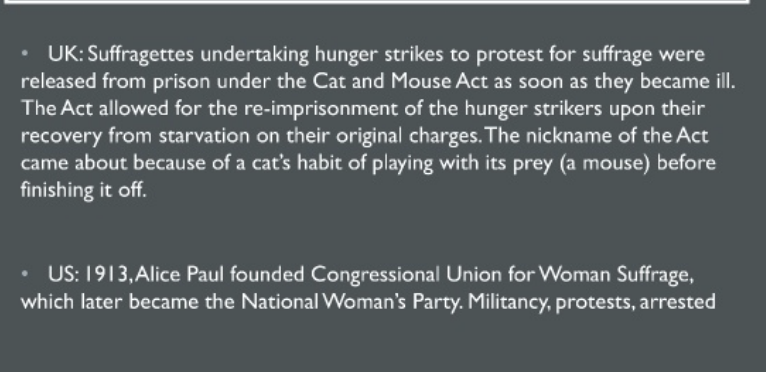
suffragists
peaceful, political, mud march → Millicent Fawcett
The United Procession of Women, or Mud March as it became known, was a peaceful demonstration in London on 9 February 1907 organised by the National Union of Women's Suffrage Societies (NUWSS), in which more than three thousand women marched from Hyde Park Corner to the Strand in support of women's suffrage.
campaigns
Parlor Politics (Newport, RI) —> informal political discussions held in private homes, where elites and community leaders influenced decisions behind the scenes. This practice allowed influential groups—and sometimes women—to shape politics in a period before widespread public political participation.
Civil Disobedience
parades, pageants—> parades and pageants were powerful tools in women’s campaigns, especially during the suffrage movement, as they publicly showcased women’s strength, unity, and demands for rights. These events combined spectacle, symbolism, and performance to draw attention, inspire supporters, and challenge traditional gender roles in highly visible ways.
Growth of Cities (Urbanization)
Germany becomes its own country in 1831.
Protestant countries doing better than Catholic. Southern Europe is left behind.
Portugal behind, no investment back into the country.
Growth of Capitals and Ports 1600-1750:
- monarchical bureaucracy and commerce
big towns grow into cities, 1750-1830:
- factories grow and so do neighboring populations
link to agriculture
Ruhr/Saar Valley — Germany (coal)
Lyon/Lille — France (manufacturing) Birmingham — UK
steam engine, migration into cities for work
creation of a waged labor force - proletarianization — 1848
map
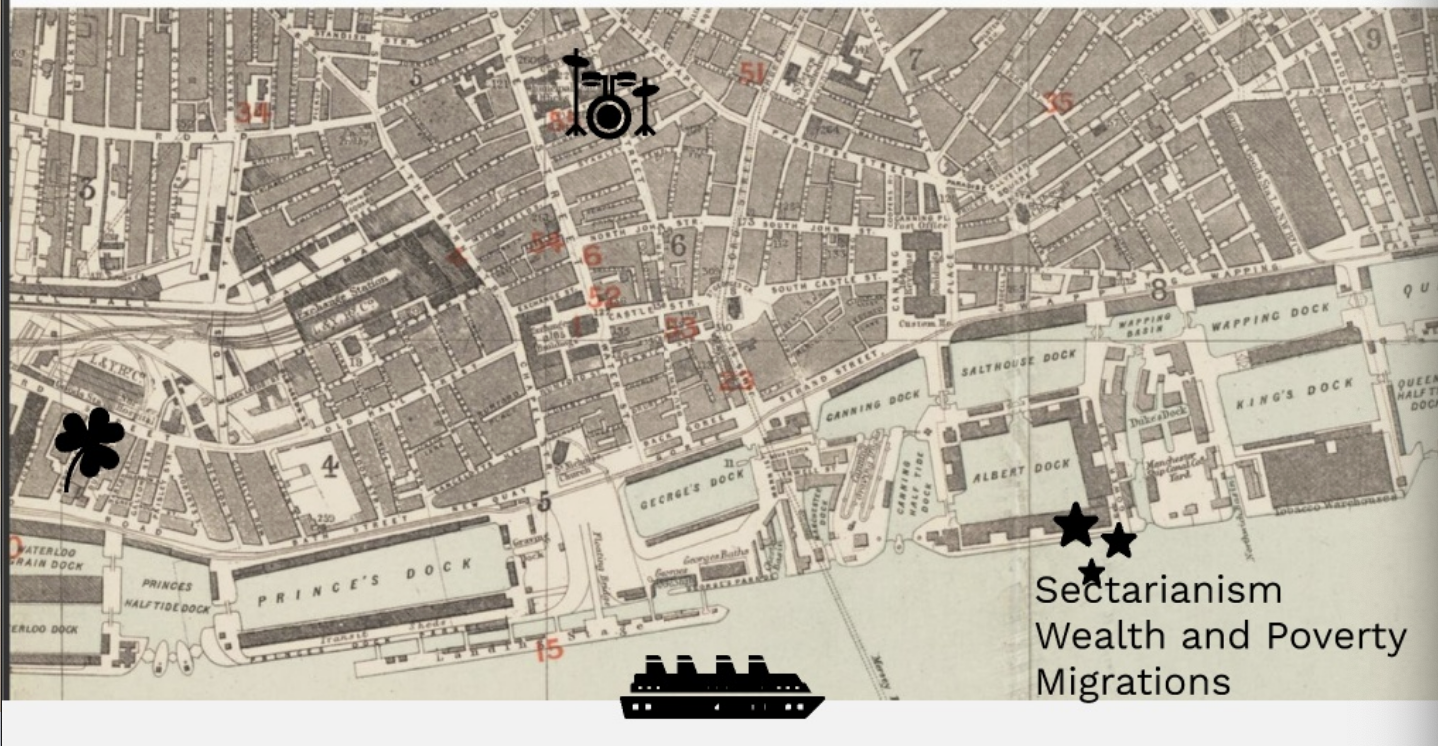
slum clearance
the urban renewal process aimed at eliminating slums and blight by demolishing deteriorated housing and replacing it with new developments such as public housing, commercial buildings, or industrial facilities.
pushes and pulls of immigration
1850: 266 million people in Europe
1910: 447 million people in Europe
persecution: Pogroms in Russia
rails, steamships, roads, aid in migration and returns
cheap land to farm and better wages elsewhere
famine
poverty
immigration reactions
nativism
conversion
desire for assimilation or acculturation?
melting pot or mosaic?
The Mortar of Assimilation
women of the Enlightenment in England —> bluestockings
group of intellectual women in 18th-century England who formed a literary and social circle focused on conversation, education, and challenging societal norms regarding women's roles. They are known for their informal salons where they discussed literature, philosophy, and other topics, often with prominent male thinkers.
Cult of Domesticity
a 19th-century ideology that defined the roles of women in the upper and middle classes, particularly in the United States and Britain. It emphasized four key virtues: piety, purity, submissiveness, and domesticity. This ideology confined women to the private, domestic sphere, while men operated in the public sphere of work and politics
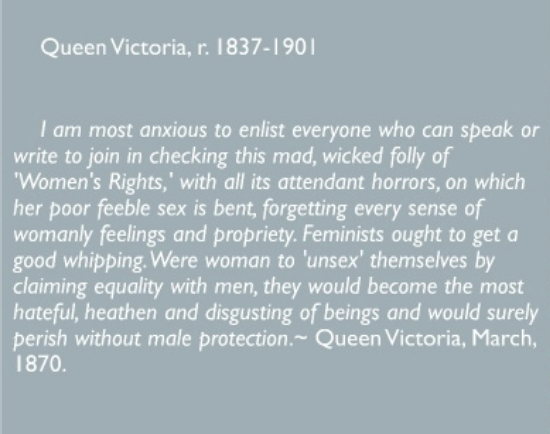

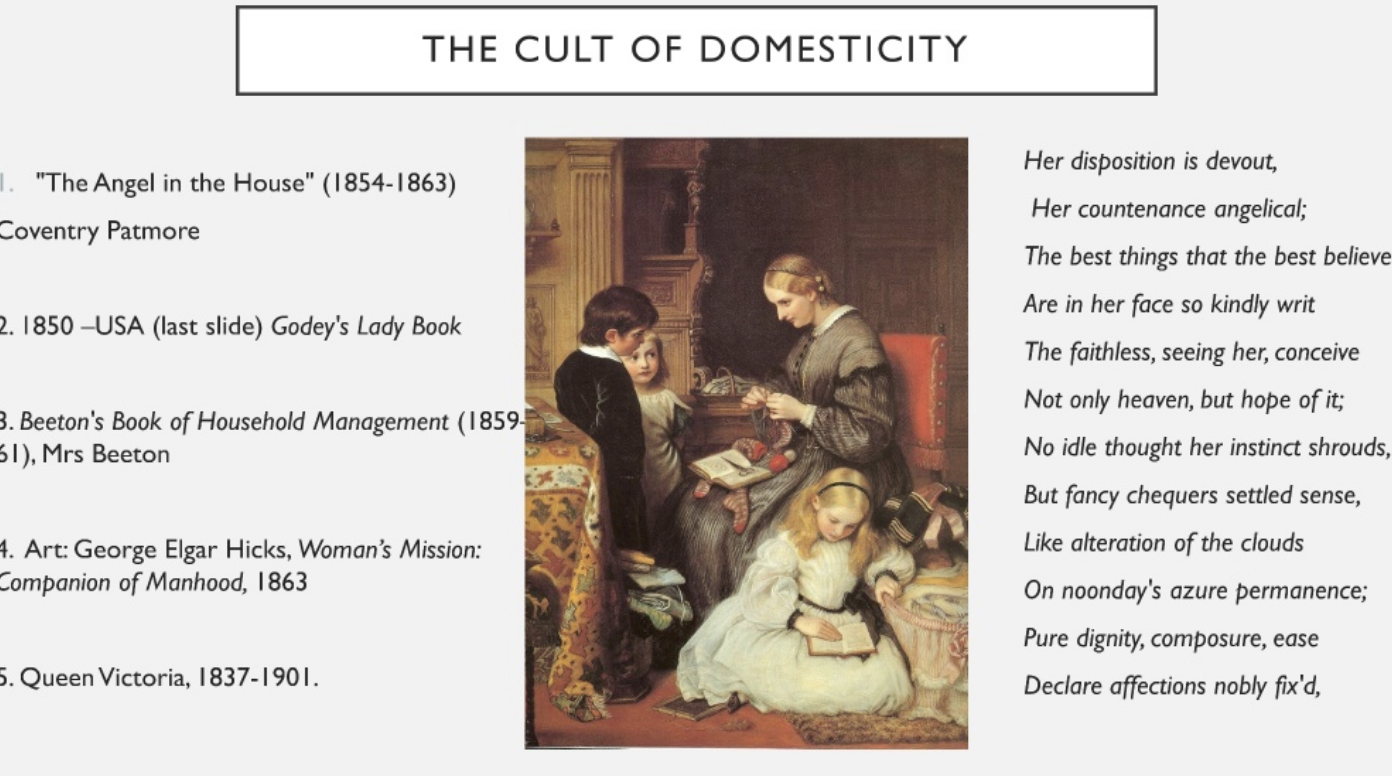
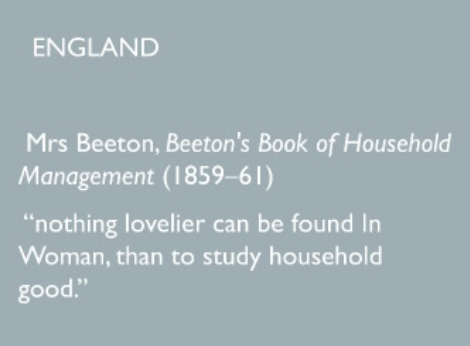
cult of womanhood
a collection of attitudes that associated “true” womanhood with the home and family.
The “New Woman” 1890s
challenge the status quo of the domestic sphere
education and enter the public sphere
Suffrage Movements in the US (Gilded Age)
NWSA (1869)
- stanton
- susan b. anthony
- more radical, equal education, rights, voting
AWSA (1869)
- lucy stone
- moderate, more limited suffrage (local only)
NAWSA, 1890
Suffrage Movements in the UK
NUWSS (1897)
- millicent Fawcett suffragists
peaceful, political mud march
WSPU (1903)
pankhurst family
suffragettes
militancy, civil disobedience
emily davison at the derby